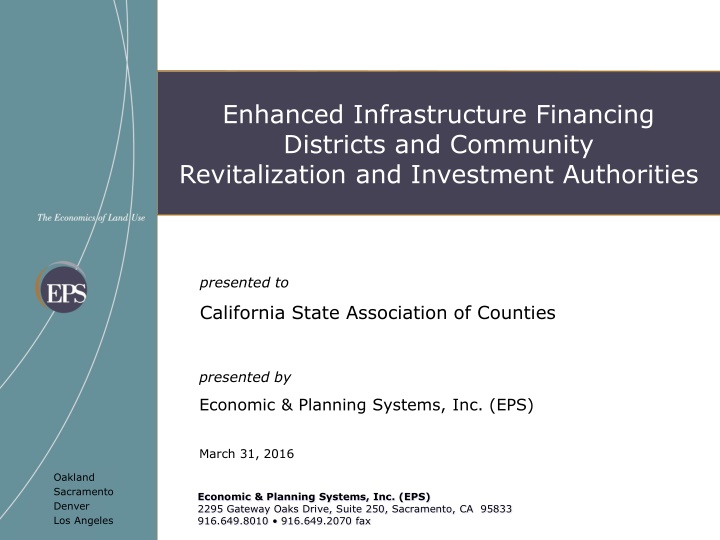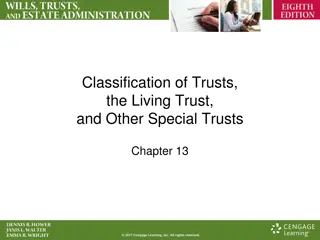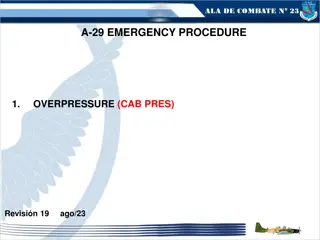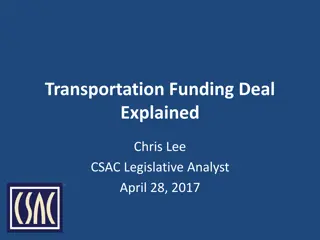
Enhanced Infrastructure Financing Districts and Community Revitalization Authorities
"Learn about Enhanced Infrastructure Financing Districts and Community Revitalization Authorities, key features, differences, and opportunities presented by Economic & Planning Systems, Inc. Important mechanisms and perspectives for promoting investment and revitalization in California are discussed."
Download Presentation

Please find below an Image/Link to download the presentation.
The content on the website is provided AS IS for your information and personal use only. It may not be sold, licensed, or shared on other websites without obtaining consent from the author. If you encounter any issues during the download, it is possible that the publisher has removed the file from their server.
You are allowed to download the files provided on this website for personal or commercial use, subject to the condition that they are used lawfully. All files are the property of their respective owners.
The content on the website is provided AS IS for your information and personal use only. It may not be sold, licensed, or shared on other websites without obtaining consent from the author.
E N D
Presentation Transcript
Enhanced Infrastructure Financing Districts and Community Revitalization and Investment Authorities presented to California State Association of Counties presented by Economic & Planning Systems, Inc. (EPS) March 31, 2016 Oakland Sacramento Denver Los Angeles Economic & Planning Systems, Inc. (EPS) 2295 Gateway Oaks Drive, Suite 250, Sacramento, CA 95833 916.649.8010 916.649.2070 fax
Introduction/Overview of Mechanisms Enhanced Infrastructure Financing District (EIFD) Authorized by Senate Bill (SB) 628 Community Revitalization Investment Authority (CRIA) Authorized by Assembly Bill (AB) 2 Forms of tax increment financing Key similarities and differences Economic & Planning Systems, Inc. (EPS) 1
Key FeaturesSimilarities Similarities Require Findings of Completion from Department of Finance Formed by local legislative body Establishes separate Public Financing Authority Governing Boards include public representation May include multiple affected taxing entities (via voluntary participation) May use RPTTF revenues May fund infrastructure and affordable housing Economic & Planning Systems, Inc. (EPS) 2
Key FeaturesDifferences Differences Formation procedures and requirements Location of improvements eligible for financing Use of alternative revenue sources Voting requirements for issuing bonds Mandatory expenditures for affordable housing (CRIA) Selection of public board representation Periodic plan reviews (CRIA) Economic & Planning Systems, Inc. (EPS) 3
Webinar Focus Perspective = County approached by municipality Highlight Opportunities/Constraints Identify Key Policy/Financial Questions Economic & Planning Systems, Inc. (EPS) 4
Opportunities Regional/Multijurisdictional Projects Legal or regulatory compliance (e.g., flood protection, wastewater treatment upgrade/expansion, etc.) Economic development opportunities (e.g., bridges, interchanges, airports, multimodal facilities, etc.) Infrastructure investments should provide desirable public purpose Promote and facilitate affordable housing if it is a priority Opportunity to leverage private investment County participation might leverage special district or other agency participation Economic & Planning Systems, Inc. (EPS) 5
County Considerations Market/Financial Feasibility of Proposed Project(s) Fiscal Impacts Cost of County-provided services compared to property tax redirected Costs versus benefits (measurement and time frame) Investment Leverage Municipality investment(s) Combination of other local funding sources Ability to leverage State and Federal participation Economic & Planning Systems, Inc. (EPS) 6
County Considerations (continued) Financing structure (voter approval required for bond sale or combination with other financing vehicle?) Authority/Control over Implementation County as subset of larger governing board County participation varies between two mechanisms Economic & Planning Systems, Inc. (EPS) 7
Conclusions View as any other public investment decision Improvements/revitalization are a priority? All other financing options considered/included? Does County participation leverage additional investment effectively? Any opportunity costs associated with investment decision? Analyses to support policy decisions Market analysis Project cost and revenue forecasts Fiscal impact analysis Plan documents (EIFD or CRIA) Economic & Planning Systems, Inc. (EPS) 8
Questions Contact Information Jamie Gomes Economic & Planning Systems, Inc. (EPS) 2295 Gateway Oaks Drive, Suite 250 Sacramento, CA 95833 (916) 649-8010 jgomes@epssac.com Economic & Planning Systems, Inc. (EPS) 9
2016 Legislation (so far) Clean Up and Protection Assembly Bill 2492 (Alejo) Clean up on qualifiers for CRIA eligibility Average income levels Local unemployment rate Crime rates Eligible financing mechanisms mirror EIFDs Senate Bill 975 (Senate Governance and Finance Committee) Protects property tax rates approved by voters for specific purposes above the 1% - aka override rates Otherwise, EIFDs and CRIAs could siphon tax increment














